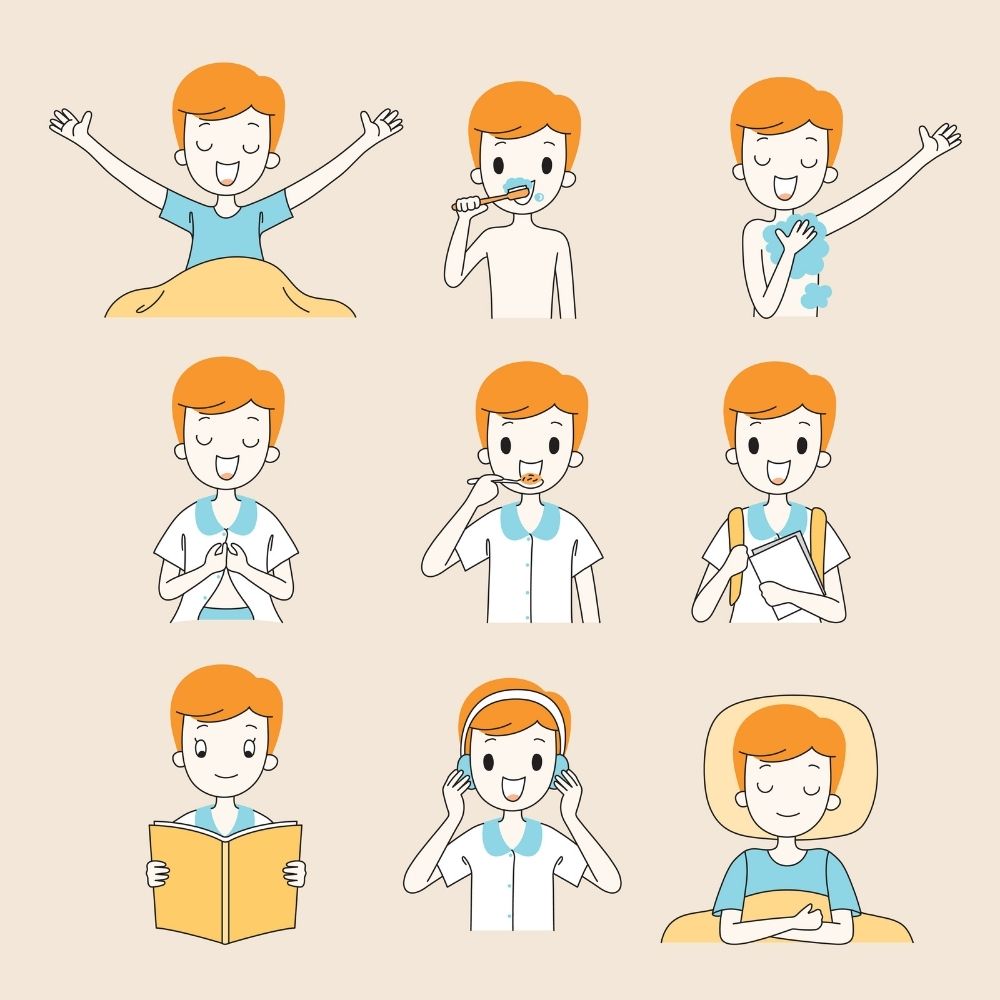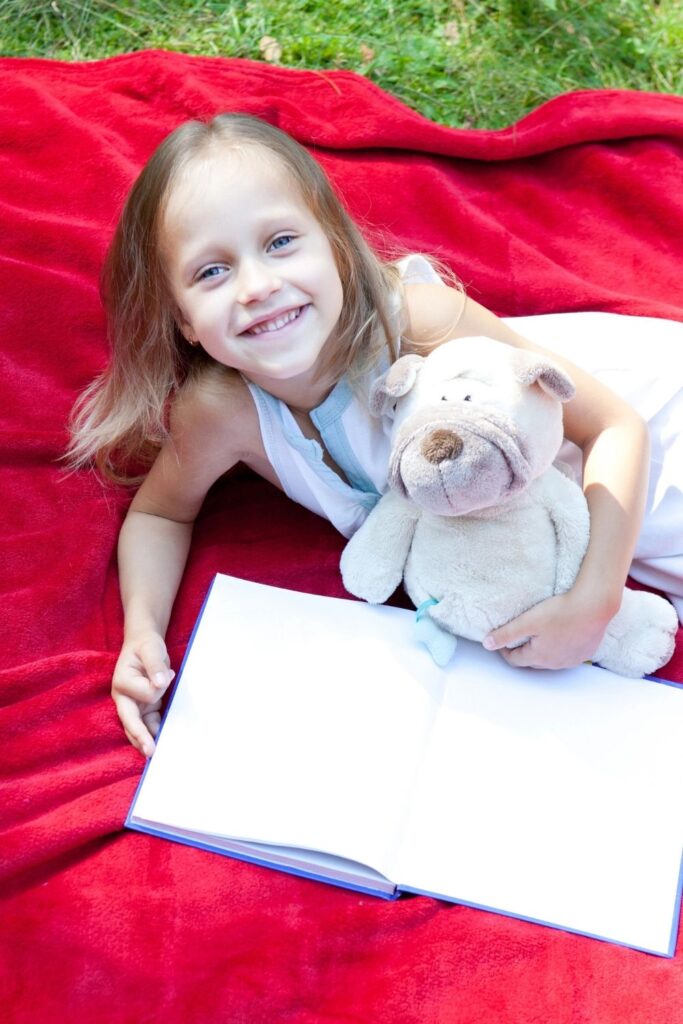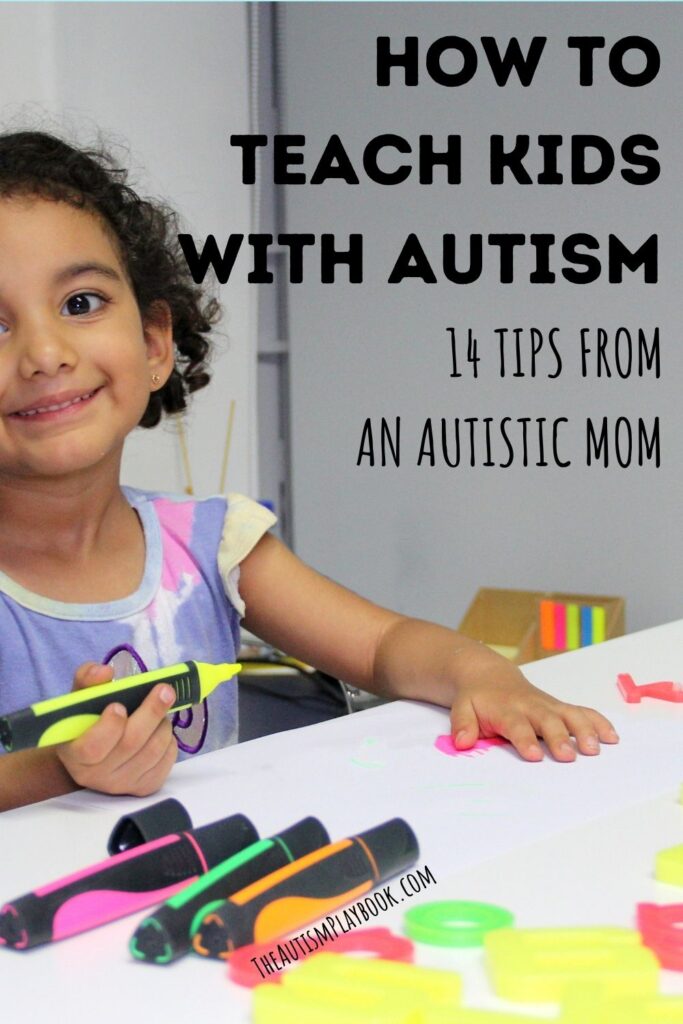Teaching kids is a hard enough task. Throw some autism spectrum disorder into the mix, and you’ll likely have to rethink your entire approach to inclusive education!
While I’m not a teacher per se, I’ve spent a decade teaching a wide variety of children in both gymnastics and kids’ church settings. What I feel is most helpful to this post about how to teach kids with autism is that I am also autistic…and have an autistic daughter.
I think one of the biggest challenges to parents raising autistic children is that your brains just work so differently. It’s a constant struggle for my non-autistic husband to decide if our autistic daughter is being purposefully difficult or disrespectful…or autistic.
In contrast, I know exactly where she’s coming from!
I understand why she thinks and acts the way she does, I experience the same sensory overload and obsession over special interests, and I struggle right along with her with changes to our daily routines. It’s much easier for me to tell when she’s at the mercy of sensory issues or genuinely struggling to process information…or when she’s purposely trying to push our buttons.
And because of that unique position, I also inherently know the best ways to support her learning. These are the things I was doing for her before I realized she was autistic…and that I’ve since learned are the approaches that autism spectrum disorder specialists recommend.
So…let’s dive in, shall we?
How to Teach Kids with Autism by Supporting Learning with a Structured Schedule
Follow a consistent schedule.
Just like autistic adults, autistic children do best when following a consistent, predictable schedule.
My daughter arrives at school within the same 10-minute window every day. Her teacher follows a consistent classroom schedule and daily routines, with visual schedules and clear routines written on the board.
When she arrives home after school, she always eats a small snack and starts her homework right away.
We’ve learned through trial and error that we can’t just do things whenever we feel like it. We do things at the same time almost every day.
It feels rigid. Live a little, am I right?!
But I’ve found that when my daughter can anticipate and prepare her mind for what’s coming next, she enjoys better focus, more patience, improved auditory processing, and fewer chances of a meltdown. And those are all things that are critical to effective learning!
Establish structure with daily routines.
I know, I know. You’re already following a schedule and now I’m adding daily routines? Yes!
Again, the more autistic people can anticipate what’s next, the less energy we have to expend navigating our day-to-day lives and the more focus we can afford for learning.
That means my daughter gets ready in the same exact order every morning and follows the same bedtime routine every night. It also means we have clear routines built into eating meals, completing homework, shopping for groceries, and more.
If you don’t want to think of them as daily routines, think of them as family rituals.
The kids always eat a snack before starting homework. Mom always brings home breakfast tacos from her weekend morning workouts. Our family always grabs a coffee on the way to church, where we always sit in the same spot in the balcony.
Creating these predictable, clear routines will help free up space for learning in an autistic child’s brain, making your job easier!
Schedule regular downtime.
With that said, I’ve also learned over the years that regular downtime is crucial to avoiding meltdowns during more structured times of learning.
Downtime is time that your child can count on to do whatever their heart desires. This could include indulging in special interests, enjoying unstructured play, vegging out in front of a movie, or whatever else they need at that time.
This can also mean avoiding a jam-packed schedule in general.
We join sports and after-school clubs very sparingly since I know my daughter needs time each day to unwind and be herself. When she gets the downtime she needs to decompress, she can show up to school and other events better rested and more focused.
In a traditional school setting, downtime could come through recesses and/or scheduled periods of short “free time” between subjects.
How to Teach Kids with Autism by Designing a Supportive Environment
Maintain a controlled environment (and students) as much as possible.
I’ve always said that my daughter and I don’t “free style” well.
Put her in an activity with non-autistic students and clear instructions, and she can follow along. Put her in the middle of recess at a new school with no expectations or directions, and she’ll stand alone watching the other kids play for the first two weeks. (Ask me how I know.)
With some activities, we assume kids don’t need directions. Just go play! That’s what kids do! Right?
While most non-autistic students will rise to the occasion (with a few rising a little too enthusiastically), autistic students will likely feel overwhelmed by the invitation. This is the same reason my daughter struggles at what should be fun and otherwise natural activities like playing at parks, Easter egg hunts, and kids’ birthday parties (even those of her closest friends).
For these reasons, you’ll want to set clear expectations and provide step-by-step instructions for most learning activities, even if/when it might seem relatively obvious to you. Take swift action to maintain control of your classroom setting when students act out or stage a coup (I’m joking, of course!) to provide autistic students with a sense of reassurance and consistency.
And when the agenda calls for free play and/or unstructured peer interactions, consider providing autistic students with directions or suggestions.
When my daughter was new to her school, she and I discussed different ways she could join the soccer game she had been watching and talked about how starting as the goalie might feel less overwhelming than fighting for the ball on the field. Find out what they’re interested in doing, then equip them with several different strategies for accomplishing that goal.
Incorporate visual aids.
Autistic people generally struggle to process and retain verbal instructions.
It’s not that we’re not paying attention, but that our auditory processing challenges have made us more visual learners. This is why the most supportive learning environment for autistic students will incorporate lots of visual aids.
Post visual schedules where they can be easily viewed and reviewed again. For young children still learning to read, add visual supports to written schedules, such as a fork for lunchtime or a music note for music class. List daily routines and expectations in written or picture form.
Include clear instructions at the top of assignments whenever possible, as autistic students can easily misunderstand or forget verbal directions. It may also help to email explicit instructions to parents to ensure your message makes it home in one piece.
When teaching a subject, use visual aids like photos, videos, maps, and physical examples to help facilitate and deepen understanding. Consider providing written supplementation that can go home with students for closer review every afternoon.

Create a safe space for sensory overload.
The fact is that even with clear routines and instructions, autistic people still deal with regular sensory issues, including sensitivities to sounds, lights, textures, and more. Creating a safe space for these instances can help to prevent sensory overload from snowballing into an autistic meltdown.
A “safe space” can be a small area of your classroom or home that is calm, quiet, and as devoid of sensory triggers as possible.
It should offer comfortable seating, calming lighting, and a basket of sensory tools to help autistic children calm their senses. This could include noise-canceling headphones, a weighted blanket or vest, sunglasses to mitigate light sensitivities, fidget spinners or other fidget toys, personal comfort items, or any other sensory tools that might help alleviate discomfort.
It’s important to remember that autistic people can’t control when they experience sensory overload. Because sensory issues can’t be scheduled, your safe space will need to be available as an option at all times to help meet your student’s sensory needs.
How to Teach Kids with Autism by Improving Understanding and Retention
Provide short, clear instructions.
Sometimes we believe that the more we talk, the better. But for autistic people, this isn’t usually the case. The more you wax poetic, the less we can articulate what it is you’re trying to say.
For that reason, get to the point! Focus on the main topics and facts you want your students to learn.
If an assignment requires explanation, keep instructions simple and specific and make sure they’re written down where your students can refer back to them.
More is not only not better, it can actually be worse. This is true whether you’re teaching a subject, explaining expectations, or correcting inappropriate behaviors.
Ask your students to explain back to you what they’ve learned.
This is one of our biggest pain points in school…my daughter struggles to process information but doesn’t usually realize it.
So if you ask her, “Does that make sense?”, she’ll honestly say it does. But what you said, and what she heard, are actually two very different things!
I’ve found that the solution is to ask her to explain the subject back to me. By hearing her take on the topic, I can clearly hear any misunderstandings or gaps in her comprehension and help to correct them.
Use stuffed (or real) animals, puppets, or other toys to indirectly deliver messages…more directly.
That heading doesn’t make sense, does it? But there’s just something about involving a third party that helps my daughter wrap her head around a message.
This is why our pets and the majority of her stuffed animals “talk” (through us) and even have distinct personalities.
A classroom puppet helped her wrap her head around math concepts. Our cat “reads” her spelling words because for whatever reason, she’ll receive them better and give less pushback that way.
Her mischievous stuffed dog does everything the wrong way so that I (and she!) can correct him and teach him how to treat his stuffed friends with kindness. She’ll yell and cry when I brush her hair but acts like an angel when her stuffed goat “brushes” it the same exact way.
Don’t ask me why this works, but receiving indirect instructions through non-threatening third parties is wildly helpful to our autistic family and others.

Learn to recognize signs of sensory overload and/or pending meltdown and pivot.
When non-autistic students start to unravel, you can often double down on your teaching with relatively positive results. Not usually so with autistic students!
I’ve found that when my daughter starts trending toward a meltdown, she stops processing what I’m saying to her altogether. So while continuing to push through our history review might make me feel more productive, we’re really just wasting our time since she’s not able to effectively process information in that moment.
When you start to recognize signs of sensory overload or pending meltdown, switch gears for a few minutes!
Distract them with a third party (see the point above) to help interrupt the snowballing effect, or temporarily shift to an activity or subject you know is easier or more enjoyable for them. Once they’ve had a chance to calm down, build in a short buffer period then return to the original subject.
Make room for special interests.
The fact is that autistic people have special interests that absolutely consume us. While it may be tempting to shut down autistic students altogether from talking about their special interests, this can actually be more counterproductive than simply making a little space for it.
When my daughter brings up an interest or topic that’s important to her and I immediately put the kibosh on it, she starts snowballing toward a meltdown. I approach this challenge by making both in-the-moment and bigger-picture space for her special interests.
The most important thing is to make room for your child’s special interests in the bigger picture of the day and week. By taking advantage of the free time we do have and allowing her to fill it with a play-by-play of her school soccer game (and actually listening to her), I’m able to regularly demonstrate that her special interests are important and matter to me…that she matters to me.
When she starts to rabbit trail on special interests at a time we’re focused on learning, I allow her a few sentences, acknowledge what she’s saying, then say something like, “I can’t wait to hear more! Let’s talk about it over dinner after we finish homework!”
Taking this approach helps to validate her feelings and priorities while still calling for focus when focus is necessary.
How to Teach Kids with Autism by Embracing a Slow and Steady Mindset
Allow them to process information at their own pace.
I’ll always remember a parent-teacher conference with my daughter’s kindergarten teacher.
I told her I already knew a lot about the flow of their class because my daughter would act it out at home every day after school. She would replay the class for her stuffed animals, explaining letter sounds on a blackboard, teaching them the words and motions to songs, and saying things that sounded like direct quotes from her teacher.
Her teacher was shocked! She said that my daughter didn’t actually participate or speak in any of those activities in class, and that she had been worried that she wasn’t processing it at all.
The thing about autistic people (myself included) is that we take longer to process information. Trust the process!
Teach information in the best way you can, then trust that we’re still thinking about it long after class is over. It might just take us a few hours or even a few days to get a good handle on it.
Push for immediate regurgitation, however, and you might just interrupt the learning process already at play in our heads.
Help them make small wins to build social skills.
Most autistic people struggle with social skills but it’s most obvious with autistic children, many of whom are practicing their social skills for the first time in a traditional school setting.
Many well-intentioned teachers and other adults will attempt to help facilitate this growth by pushing autistic children into overwhelming social situations, then encouraging them when it’s over, “See?! You survived!” While that approach may work well for some non-autistic students, it could easily knock an autistic student back several steps in their social skills development.
This is another area where you should aim for slow and steady progress.
Identify another student you think would be a kind and encouraging friend to them, then seat them near each other or pair them up for partner activities. Assign them low-stress roles that would give them a practical reason to practice interacting with classmates, such as passing out papers or acting as a line leader.
Encourage them to join after-school clubs and activities that you know are structured and calm. Bonus points if the club is geared toward their special interests!
And when they do interact with their classmates, offer some recognition and praise.
My daughter’s teacher emailed congratulations home when she noticed my daughter scored a goal in the recess soccer game. Hearing that positive reinforcement made my daughter’s day! Plus, it made her excited to play again the following day.
Strike a balance of pushing and supporting.
The fact is that if I never pushed my autistic daughter into uncomfortable situations, she’d never learn or grow. The trick is recognizing what situations are uncomfortable but manageable, and building up those small wins.
I might encourage her to go to a birthday party she’s nervous to attend, but reassure her I’ll be there with her and help her if she needs some extra support. I had to practically push her through the door of her new school, but not before we visited the school together and I explained and re-explained what she could expect there a million times.
But it’s also important to recognize where to draw the line.
I’m not going to push my daughter to attend a stay-away summer camp or force her to join the drama club and perform in a play. Again, these are things that might benefit non-autistic students (maybe) but are usually counterproductive for an autistic child’s development.

While I know there are probably lots more formal, scientific recommendations for learning how to teach kids with autism spectrum disorder, this is what is working for us!
Have any tips that are working well for you? Be sure to share in the comments!
And friend…hang in there! Learning how to teach kids with autism is a long and winding road, full of potholes and detours and a few storms. But the destination is so worth it.
You’ve got this!
